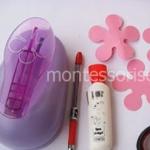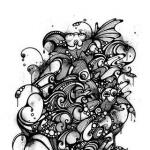Summer fabric that wrinkles easily. What to wear in the heat: Natural fabrics, the right colors and items
There is a great variety of cotton fabrics, because cotton is the most common material in the textile industry. Products made from cotton fabrics are mostly pleasant to the touch, high quality, strong, durable and inexpensive. Cotton perfectly absorbs moisture while remaining dry to the touch. It washes well. In general, the list of its advantages is extensive.
Almost all types of weaving are used in the production of cotton fabrics, but the most popular of them is still the simplest, linen.
Cotton fabrics can be divided according to the nature of their finishing. Here are some of the types:
- Severe. These are fabrics without any finishing or dyeing at all.
- Bleached - those that have undergone a bleaching stage at the factory using special substances.
- Plain painted. These are fabrics that are uniformly dyed in one color.
- Melange. They are made from yarn made from fibers dyed in different colors.
- Mulinated. Fabrics woven from two-color or multi-color twisted yarn.
- Printed. Fabrics with a printed design or pattern.
- Multi-colored fabrics also have a pattern, but it is formed during the weaving process by alternating multi-colored warp (vertical) and weft (horizontal) threads.
- Mercerized. Treated fabrics that have undergone special chemical treatment. They become more pleasant to the touch and more durable.
Also cotton fabrics can be divided into household and technical. Clothes and home textiles are made from household waste. Technical ones are used in the manufacture of equipment, in the chemical, furniture industries and in many other industries.
Types of cotton fabrics
It's easy to get lost in the kingdom of cotton. We bring to your attention a table that will allow you to navigate this great variety of cotton fabrics a little better.
|
Textile |
Appearance |
Fabric properties |
What do they make from it? |
|
Bike |
|
Dense, soft, affordable fabric that can withstand the cold. Has thick pile |
Pajamas, shirts, home clothes |
|
Velvet |
|
Soft, luxurious fabric. Thick pile on the front side |
Pantsuits, dresses, curtains |
|
|
Warm, dense, durable, wear-resistant fabric of the simplest plain weave. Looks the same on both sides |
||
|
Waffle fabric |
|
Unusual appearance. Rigid fabric with excellent absorbent properties |
Towels |
|
Velveteen |
|
Dense fabric with longitudinal ribs on the front side |
Coats, skirts, suits, trousers |
|
Guipure |
|
Various weaves of twisted threads, reminiscent of lace, form convex patterns on the fabric |
Evening dresses, underwear, blouses |
|
Denim fabric |
|
Durable, rough, dense fabric |
The most varied clothes |
|
Kiseya |
|
Thin, airy, transparent plain weave fabric. Weft threads entwined with a pair of warp threads remain straight and lie separately |
Baby clothes, women's dresses |
|
Eraser |
|
Thin, light, shiny satin weave fabric, similar to satin |
Shirts, dresses, linings |
|
Gauze |
|
Transparent, thin mesh fabric with very low density |
Used in medicine, printing, sewing |
|
Terry fabric |
|
A fabric with a loop weave and a pile that is formed by pulling the warp threads. |
Robes, towels, sheets |
|
Moleskin |
|
Thick satin weave fabric. Has a smooth surface. Durable, wear-resistant |
Work clothes, raincoats, suits |
|
Raincoat fabric |
|
Water-repellent treated plain weave fabric. Durable, dense |
Jackets, raincoats, overalls |
|
Plush |
|
Fuzzy fabric, lightweight and durable |
Stuffed Toys. Also used in decoration and upholstery |
|
|
Plain weave fabric with cross rib, durable and practical |
||
|
|
Hot weather is relaxing. On a beautiful summer day we fill up good mood and enjoy the comfort. This feeling should be supported by comfortable summer clothes. No outerwear, only shorts, T-shirts. Only in the evenings a light jacket and chinos.
How can a man dress in summer without sacrificing comfort? How to look stylish and presentable in summer? Which materials are more suitable for summer clothing and which are not. Let's look for answers together.
When it comes to classic clothing for hot weather, a dilemma arises. Most clothing styles and dress codes come to us from the old world (the kingdom of Great Britain), where it is usually cold and rainy. It is obvious that summer clothing developed poorly there, if at all.
Therefore, it is obvious that a wool suit or fashionable knitwear in the heat, when the thermometer is +30 Celsius, is not worth remembering. What should a stylish gentleman wear in the summer?
There are many articles on this topic on the Russian Internet, but most of them are addressed to girls. Therefore, we need to correct the situation and create a complete guide for men.
The topic is quite extensive, so I will divide it into 2 or even 3 parts. In the first part we will look at general principles, which should be followed in the summer and types of fabrics that are more or less suitable for summer. we will look at wardrobe items that you can wear in the summer without experiencing discomfort. In the third part, we will look at shoes and accessories for men that are in demand in the summer.
Main characteristics of summer men's clothing
Looking good is important for a man, however, when it comes to the hot season, the priority is still functionality. What you need to pay attention to when buying and choosing summer clothes:
Lightweight fabrics
What really matters in the summer is the thickness and weight of the fabric. The thinner and lighter the fabric, the more comfortable the feeling and better the air circulation.
Pick up the clothes and try to estimate their weight. If the item seems quite light to you, try putting it on and walking around the store. If you don’t sweat or feel discomfort, don’t hesitate to buy it.
The lighter the fabric, the better suited it is for summer.
Breathable fabric
The fabric may be light, but the weave of the threads in it can be very dense and air will not circulate through it. And this, naturally, will lead to excessive overheating and sweating (not a very pleasant word, but what to do...).
Not long ago, we talked about... There I gave advice on how to determine whether a fabric is breathable or not. Briefly: take the thing, bring it to your mouth and try to breathe through it. If you can breathe, then the fabric is quite suitable.
The easier it is to breathe through the fabric, the more preferable the fabric is for summer.
Sun protection
Are you thinking about sun protection? Direct sunlight hitting your skin will heat up your entire body. Not to mention skin burns if the sun is especially active and you are careless.
Fortunately, there is a way out of this situation; it is enough to wear a light long-sleeved shirt, long pants and a headdress in the form. It is possible to protect your eyes from sun rays. But all this is obvious.
Much color is more important all these things. Wear light-colored clothing to reflect direct sunlight. Simple physics works - black color accumulates and absorbs more light than it reflects. In this regard, wear mostly white or light-colored clothes.
When exposed to the sun, wear clothing that completely covers exposed areas of your body. Also, use only light colors.
Chasing style
The main problem with summer clothes is that they are a product of necessity, not style. Perhaps someone will argue and say that shorts look better than chinos or khakis. But I have a different opinion.
If I see a man in shorts and a T-shirt, I will think that he is a person of not very high status and works somewhere as a “handyman”. Will he be dressed stylishly? Not sure. It all depends on his sense of style and taste, additional accessories, selected prints, colors and other things…. It's a different matter when you put on a shirt, chinos and... Human perception is completely different.
Of course, you can tell me that the man in the stretched T-shirt and shorts is a millionaire on vacation. It may be true, but you can't tell by his clothes.
Therefore, in summer clothes you always have to chase style in order to look a little better guy from the neighboring yard. Creating a stylish summer look is a secondary, but not unimportant, task.
Suitable fabrics for summer clothes
So, we have discussed above 4 main characteristics of summer clothing. What's next?
There are more and less suitable fabrics for sewing summer clothes. Let's start with the materials that are used to make summer fabrics.
Linen
Linen is the best natural material that can be used for sewing clothes. It is lightweight, breathable and allows you to create a unique pattern of interlocking threads. However, it has a drawback - linen wrinkles easily. On the other hand, this is its charm.

Modern textile production sews from linen fabric jackets, trousers, suits, shirts and T-shirts. Bags, shoes, hats and other accessories are made from linen. Linen items are often painted in muted pastel colors to emphasize the lightness of the material.
Advantages of linen fabric:
- Very light and breathable fabric.
- An interesting interweaving of fabric threads that cannot be confused with anything else.
- Quickly evaporates moisture without retaining it.
Disadvantages of linen fabric:
- Expensive fabric, and often used by expensive brands.
- It wrinkles easily and is extremely difficult to iron (even if you know how, after 30 minutes linen shirt it will still be mint).
- Delicate fabric wears out quickly and is difficult to care for.
Wool
We usually forget about woolen items in the summer and remember only in late autumn. Wool suits, wool knitwear, wool blazers and everything else are usually worn during the cold season.

However, there are woolen items made from very thin and light wool thread. Summer suits are made from wool with a value of 140-170 units. Let me remind you that 140 units means how many kilometers of thread can be made from 1 kilogram of wool.
In addition to fabrics for classic suits, make flannel. It is used to make flannel shirts, which are comfortable to wear on cool summer evenings.
Advantages wool fabric:
- Wool makes the most beautiful and neat fabrics.
- Wool fabric is easier to care for and iron, unlike linen.
- Wool breathes and dries better than cotton.
Disadvantages of wool fabric:
- Heavier than linen and cotton.
- Expensive material.
- Not all types of wool fabrics are suitable for summer.
Cotton
Most of the things in our wardrobe are from. This is a lightweight, breathable material. It is much cheaper than wool and flax. However, cotton items are available for both winter and summer seasons. The whole difference is in the weave and thickness of the threads.

- Twill– dense cotton fabric with twill weave. Most jeans are made from twill and have a distinctive herringbone pattern. If the thread is very thin, then the clothes are quite suitable for summer. But if the thread is thick, then wear such clothes only in the cold season.
- Poplin- a type of cotton fabric with small indentations. Due to the different tension of the threads of the upper and lower layers, a small air space is formed between them. Poplin dries quickly and is easy to blow through. Summer shirts, polos, as well as trousers and jackets are made from poplin fabric. Also available on sale summer suits made from poplin fabric.
- Seersucker or crinkled calico, is a corrugated fabric with different tensions of the lower and upper threads. Unlike poplin, it has a more pronounced relief and a softer texture. Seersucker fabric is the lightest and most breathable fabric from which things are made (we don’t take chintz into account). Seersucker fabric is used to make shirts, trousers, and summer suits.
- Madras– light cotton fabric with twill weave. It has a characteristic pattern in the form of a cage of different colors. The texture is softer than poplin and seersucker. Shirts, shorts or sports jackets are made from madras. The fabric is good for summer heat, as it is easily blown by the wind.
These were the most common types of cotton fabric used for summer clothing.
In order not to torment the seller about what kind of fabric was used to sew the shirt, just do a couple of tests. First, try breathing through the fabric. Second, look at the fabric against light. The easier it is to breathe and the light shines through, the more preferable a cotton item is for the summer.
Advantages of cotton fabric:
- Low cost and easy availability.
- Lots of light and breathable fabric types.
- The most unpretentious material.
Disadvantages of cotton fabric:
- Retains moisture more than wool and linen.
- Not a very noble fabric.
- May lose shape and color after several washes.
Silk
The best combination of strength and low weight lies in silk. Silk is great for ladies' evening dresses or men's tuxedos. To cope with the summer heat, silk items should be loose and quite thin.

Men's shirts, jackets, vests, trousers and tuxedos are made from silk.
Advantages of silk fabric:
- Smooth structure, very pleasant to the touch.
- The thinnest and lightest fabrics are made from silk.
- The colors retain their shine for a long time.
Disadvantages of silk:
- Expensive fabric, if we talk about natural silk.
- The fabric wrinkles quickly and is difficult to care for.
- Retains moisture.
Synthetic materials
With synthetic materials, not everything is so simple. The fact is that modern technologies make it possible to produce materials with different specified properties. For example, thermal underwear, specially made for athletes, allows you to retain heat, evaporate moisture and withstand high loads, preventing increased wear.

At the same time, there are materials such as polyester or viscose, which, apart from price and reduced wear of fabrics, do not have outstanding properties. Synthetics are not breathable, can cause allergies and are not considered preferable for making good clothing.
Advantages of synthetic fabrics:
- Low cost.
- Special synthetic materials evaporate moisture well.
- The fabric is very light.
Disadvantages of synthetics:
- Viscose or polyester do not allow air to pass through well and do not evaporate moisture.
- Synthetics may cause irritation or allergies.
- Synthetics are added to save money in clothing production.
This wardrobe item will save you in the hottest weather both in the city and in the office. The staple gives a feeling of coolness, allows air to pass through and absorbs moisture, it is soft and pleasant to the touch. Manufacturers offer many colors of these trousers, so they are quite easy to combine. A win-win trio would be a combination with a white top and.
How to care: This fabric is 50/50 cotton and synthetic fibers. It is quite thin, so it is recommended to wash trousers at a temperature of 40 degrees at low speeds and using liquid powder. It is worth remembering that the material shrinks by 5%, so you can safely buy trousers a size larger. It is better to iron them from the inside out (to avoid getting shiny stripes) and through gauze.
Batiste dress
A cambric dress cannot be called clothes for every day, but there is hardly anything more suitable for gala event sultry summer. As a rule, such dresses are decorated with embroidery or printed patterns, so they look very elegant even in neutral colors. A fedora hat and a bag with fringe or wicker will help support your airy bow.
How to care: Wash only in the delicate wash mode with a spin cycle of no more than 400 rpm. Dry in a shaded place, out of direct sunlight. Batiste practically does not wrinkle, but if the dress still requires ironing, then this can only be done through thin cotton fabric.
Silk blouse
A must-have item in everyone's wardrobe modern girl. A silk blouse will not only provide excellent breathability and thermoregulation. You can wear it with, and even shorts. Let the shoes be with heels (so as not to simplify the ensemble) and without unnecessary detailing.
How to care: Wash by hand in a mild soap solution, do not rub or wring. A towel will help remove excess moisture. Dry in a horizontal position away from heating devices, and iron with a slightly heated iron.
Satin blouse
An alternative to a silk blouse is a satin one. This material is much cheaper and more practical, because it consists of 100% cotton, although in appearance and in its properties it is very similar to silk, or rather its subtype - satin. This effect is achieved due to the very dense weave of the threads. A satin blouse will fit into both a stylish office and city ensemble with jeans.
How to care: turn inside out and wash in cotton mode at a temperature of no more than 40 degrees. When wet, all things made of satin become quite heavy, so it is better to wash such a blouse with an incomplete drum. Iron at temperatures up to 90 degrees.
Viscose shirt dress
Viscose is a fabric obtained from natural raw materials (wood) by artificial means. It absorbs a lot of moisture, is very pleasant to the touch and is relatively inexpensive. In addition, this material drapes and falls beautifully, making it great for creating versatile shirt dresses in a variety of colors.
How to care: wash with a partial drum in the delicate wash mode, dry on a hanger, iron through a damp cotton cloth in the “silk” mode.
Linen suit
This suit looks impressive, rich and elegant. It doesn't need much introduction because flax is known for its exceptional properties. You will never feel hot in an office linen trouser suit. It harmonizes wonderfully with classic-cut shirts, ties, and formal shoes.
How to care: The main problem is ironing, because this fabric wrinkles very easily. Experts recommend ironing a linen suit slightly damp on the cotton setting, letting it cool and only then putting it on.
Chiffon pleated skirt
A pleated skirt is a thing that won't make you feel hot thanks to its style. You can get an even more airy ensemble by wearing a floor-length pleated chiffon skirt. This wardrobe item can be combined with a tight-fitting top, crop tops or lingerie-style tops. And if you are confused high heel, you can wear such a skirt
Question
I'm interested in everything related to appearance, but I'm very shy. I think that this is visible from the outside and will not even help beautiful clothes. What do you recommend?Answer
In life, we all have to communicate with people, and very often with strangers. In the service you have to defend your point of view and argue. For some this comes very easily and simply; such a person is even mobilized by such a struggle and forces him to pull himself together. It is easy for such people to achieve success.
This behavior also affects the opposite sex. A woman who can express her thoughts, has a sense of humor, shines with intelligence, and attracts the gaze of men, like any bright personality. And this inspires a woman.
Well, what if a woman is shy and timid? If she is used to sitting modestly in a corner? If she does not dare to open her mouth, although she could give many arguments and even win the argument, defending her opinion? The need to fight for victory terrifies her. Immediately your heartbeat quickens, your palms sweat, and so on. How can you make an impression in such a state? Thus, the path to success is cut off for shy people.
So what is the cause of shyness? Is it worth fighting it? The reason should be sought in childhood. After all, parents generally like obedient and “comfortable” children. As a result of this, the child learns that it is easier to obey someone else's orders than to argue and show his own initiative. In addition, if the child’s parents were bright personalities, then it was always easier for him to sit in the shadow of such parents than to achieve something himself.
In order to be bright, interesting, and sociable, you need skills. But where can you get them? They can and should be purchased. For this purpose, there are special exercises on communication techniques. Here are some tips to combat shyness. First, stop comparing yourself to others. You need to be aware of your shortcomings and advantages. By the way, shyness in some cases can be considered an advantage - if you are calm and non-conflicting, then this can be an excellent advantage when applying for a job. Old sorrows should not give rise to new ones. Troubles happen to absolutely everyone, so you need to erase them from your memory and forget them.
Try to expand your social circle. Shy people often withdraw into themselves. Be bolder! Accept invitations, go to visit. Don't take other people's aggressiveness and hostility personally. Often a person who behaves this way is himself offended by life. Appreciate your successes, even small ones. Prosperity, love and success do not come more often to those who are more beautiful or smarter. Usually, all this is achieved by those who are determined and believe in themselves. The sister of self-doubt is low self-esteem. Your goal is to raise it. But remember: not everyone likes bright and broken people. Many people prefer to communicate with reserved people. And most importantly - be yourself! Don't be shy to express your feelings and emotions.
If you find it difficult to do this on your own, join us! With us, people become more relaxed and self-confident.
Ekaterina Panina, leading image maker and coach of the Center for Image Technologies "Your Image"
Question
I'm interested in the characteristics of summer fabrics. Which fabrics “cool” and which ones “breathe”?Answer
Very durable, comfortable to wear. The fabric absorbs a lot of moisture and does not become damp to the touch. Cotton has almost no heat, which means it is an ideal fabric for summer clothing.
However, there are also disadvantages. Cotton fabrics wrinkle a lot and shrink when washed if they are not treated (that is, not treated in a special way).
This is a fabric with a very smooth surface with a matte sheen. Easily absorbs moisture and dries quickly. This fabric also wicks moisture well, making it ideal for humid, hot weather. Linen is harder and stiffer than cotton fabrics. It wrinkles, but not as much as cotton.
WOOL
Woolen fabrics hardly wrinkle. Sometimes it is enough to hang woolen clothes on a hanger for wrinkled folds to disappear from them after a while. Sweat odors quickly disappear from woolen fabrics. The surface of wool fabric repels water droplets, but absorbs moisture in the form of steam. Therefore, the wool dries slowly.
Good to use for summer fine wool in combination with silk (see composition when purchasing).
SILK
Silk clothing is pleasant to wear in any weather: it warms in the cold and does not heat up in the heat. Silk fabrics never feel damp to the touch. Silk quickly evaporates moisture from the surface of the skin. However, sweat can cause stains. Silk fabrics wrinkle varying degrees, again depending on the quality. High-quality silk practically does not wrinkle.
Question
I'm going on vacation and want to take several swimsuits with me. Tell me, what swimsuits are fashionable now?Answer
1.Asymmetry, asymmetry and again asymmetry. Down with boring strict lines, piquant carelessness combined with an asymmetrical cut will create a real sensation this season.
2. Retro swimsuits. The 70s are back in fashion. High closed panties, wide straps of bodices, and, of course, classic polka dots against a background of bright colors.
3. Monokini. A mix of a modest one-piece swimsuit and a daring bikini is super trendy this summer.
4. Floral prints. All sorts of exotic flowers bloomed on the latest swimsuit models. Roses, lilies, daisies - what exactly to choose from the riot of colors presented by the designers is up to you to decide.
5. Bandage swimsuit. Elegant monochromatic strips of fabric encircling the body look extremely impressive. Sunbathing in such a swimsuit is not recommended (the tan will turn out very strange), but at a beach party you will be the center of attention.
Designers strongly recommend completing your look this summer with large accessories - beads, bracelets, chains. The bigger, the better!
Question
Hello. Please tell me how I can avoid making mistakes when choosing a dress? Thank you in advance.Answer
If you have full legs and thighs, you should avoid short dresses and skirts. They should in no way end higher than 5 cm from the knee. And it will be better to wear an A-line skirt, but not too voluminous. The extra volume will make it look like a “pack”. Greater emphasis should be placed on the upper part of the figure - chest, shoulders. When choosing a dress, pay attention to the unusual design element of the upper part, the deep neckline. If the disadvantage of your physique is a wide waist, it is best to choose clothes with a low or high waist when choosing a dress. You need to try to divert attention from the problem area. You will also have to give up wide belts and choose thin ones that you will wear on your hips. Full shoulders and arms will make you refuse sleeveless or puffed sleeves. 3/4 or full length sleeves made of lightweight fabric, flared downward, are more suitable for you. I would like to note that by playing sports, namely exercises with dumbbells, you can get your hands in great shape. If nature has endowed you with relatively small breasts, it would be better to give preference to dresses with decorative elements in the problem area. For example, flounces or ruffles. Volumetric decorations can add more volume to the décolleté area. If your breast size seems too large for you and contributes to creating a too vulgar image, wear dresses made of opaque light fabrics that are loose in the neckline. To balance the look, focus on the bottom half of your outfit. Dresses will suit you middle length with a trapezoidal skirt. If you have to wear dresses because you are overweight large sizes, avoid layering. It will only add even more volume to your appearance. It is better to refuse baggy clothes. Dresses made of light, draping fabrics that do not hug your figure, but at the same time fit loosely, are more suitable for you. And you don’t have to give up bright colors at all. If you are too thin and self-conscious about it, it is best to wear knitted dresses with a high collar. To add more volume, you can wear a jacket on top. If you have rather thin legs, miniskirts are not for you. In clothing, you can use a wide belt to emphasize a beautiful thin waist. When choosing dresses, first of all, rely on your taste, but do not forget about the tips you just read. They will help you look great - your best!Question
Tell me what a man should pay attention to when trying on shoes in a store?Answer
The most best time to buy shoes - the second half of the day, when the foot swells a little. You should try on shoes wearing socks. After putting on your shoes, you should stand in them and walk around for at least three minutes to make sure that your feet are comfortable and your toes are not pinching. Shoes should not be either tight (except for calluses, this can lead to crooked toes) or too loose (this can lead to abrasions and inflammation).And finally. The male foot is significantly different from the female one: men have wider heels, thicker toes, higher ankles and lower arches, so the fair sex should not wear them all the time. men's shoes. Otherwise, over time, a woman’s foot may become deformed, and her gait will become clumsy and heavy.
Fabric for a dress: types and catalog of materials with names and photos, we will tell you what fabric to choose for a summer dress, we will talk about the best fabrics for sewing. A wide range of dresses in stores is associated not only with a variety of styles, but also huge selection materials for sewing them. Let's take a closer look (with photos) at what types of fabrics there are for dresses and what you should first pay attention to when choosing them.
Types of fabrics for dresses
Most often, cotton, linen, wool, silk, viscose and, less frequently, synthetics (polyester and mixed materials based on it) are used to sew dresses. Complete details for dresses can be found on our website.
What types of fabrics are there for dresses?

Products made from natural fabrics have many unique properties(air permeability, thermal conductivity, hygroscopicity), but they often wrinkle very much, so in some cases it is more practical to use mixed, synthetic (, lycra, polyester) or artificial () materials. 
What fabric to choose for a dress
Before making the final choice of fabric for a dress, you should evaluate all their properties for compliance with the conditions in which the products will be used.
- High hygienic requirements are imposed on materials, products from which are intended for everyday wear, including in offices and at home. What fabrics are these dresses made from? Since such clothes will need to be worn for 8 hours in a row, the main requirements that are placed on them are breathability and hygroscopicity. Woven fabric should absorb moisture well and remove it out while at the same time allowing the skin to breathe.
- The time of year matters too. Things for summer and winter are radically different, not only in style, but also in the composition of the fabric used for sewing. What fabrics are suitable for warm dress? For the cold season, natural wool or budget viscose are ideal. These materials have good heat-protective properties, so in such clothes you can not even be afraid severe frost.
- For evening dresses, which are usually worn for no more than 4 hours, hygiene requirements fade into the background. Here it is more important to choose the right style of product, pay attention appearance and drapery of the product. The best fabrics for an evening dress - satin, silk, velvet, lace.
Before you finally decide which fabric is best to choose for a dress, it is important to weigh the pros and cons. Don’t forget about how often the product will have to be washed and how difficult it is to care for it. All these criteria will allow us to make right choice in favor of one matter or another. In the "" section there is even more information about materials for your wardrobe. 
Fabric for summer and evening dresses
When to update summer wardrobe The question arises about what fabric to choose for a summer dress, the answer is known in advance. The best material for a summer outfit there can only be natural woven fabric. The leaders in this range are natural silk, linen, cotton and . These are materials that have “breathable” properties, they are lightweight, feel pleasant on the body and also look gentle and elegant. But it is better to avoid artificial silk, polyester and other synthetic materials based on it. 
When choosing an evening outfit, you should pay attention to a combined dress made from different fabrics. They may differ in texture and density, but at the same time visually combine with each other. Most fabrics go well with openwork and lace (you can find about them in the "" section; they can be easily combined with satin, etc. A dress made from different fabrics can differ not only in the structure of the fabric, but also in color. A well-chosen combination of colors will help emphasize advantages of the figure and hide its flaws.
Crepe-diving material has recently appeared, and it is also suitable for dresses, read about it in our other article.
Interesting: Lace has been a favorite in evening wear for a long time. This material emphasizes the dignity of the figure, and makes the image as a whole more feminine and romantic.
In addition to the topic of choosing material for a dress, we suggest watching an excellent video:






















